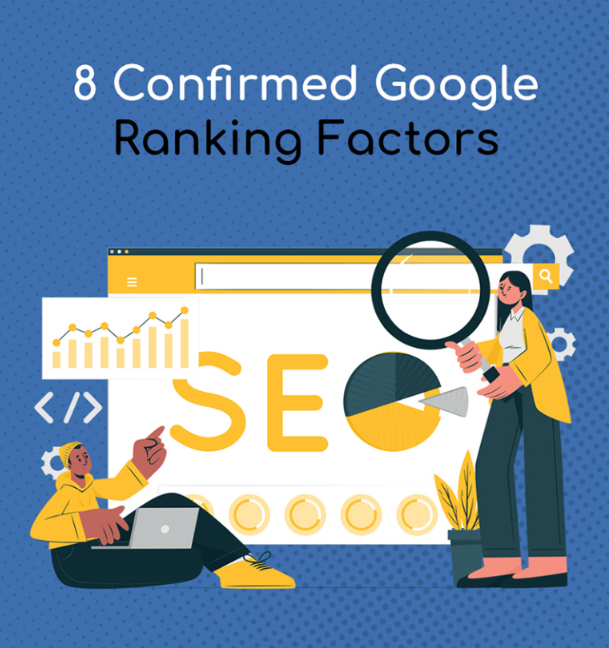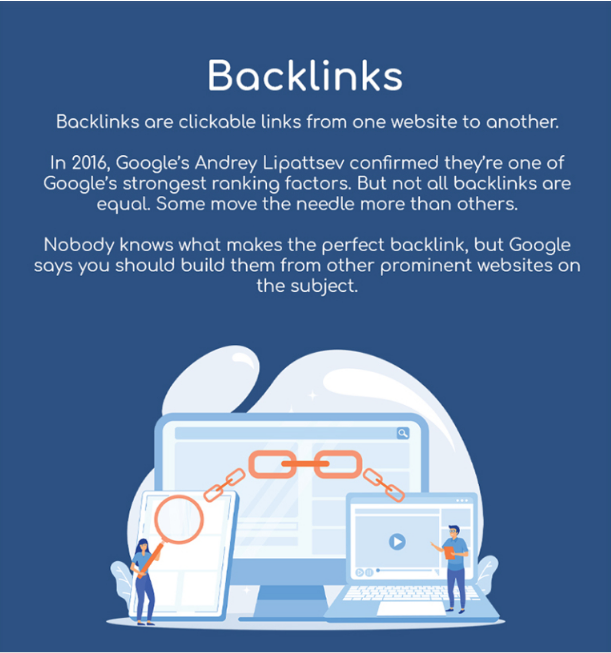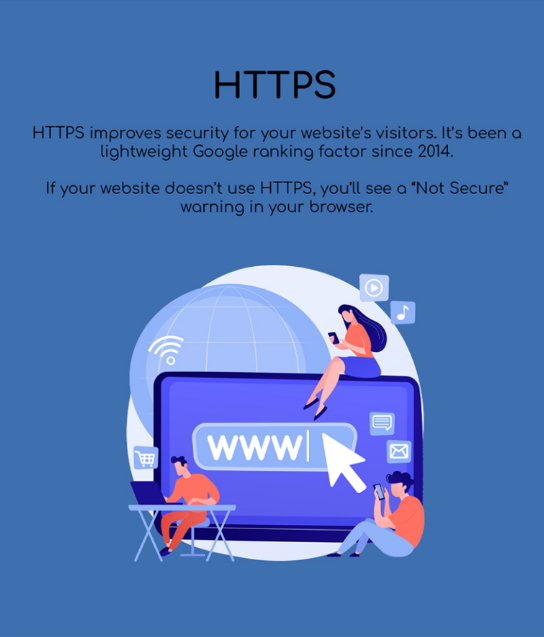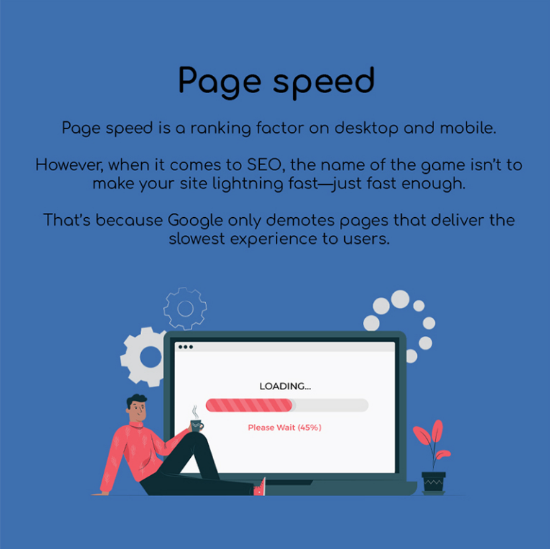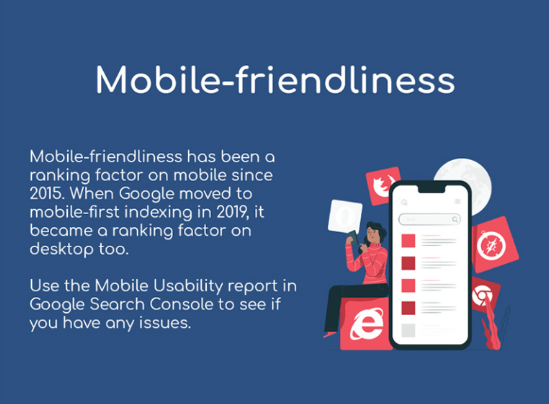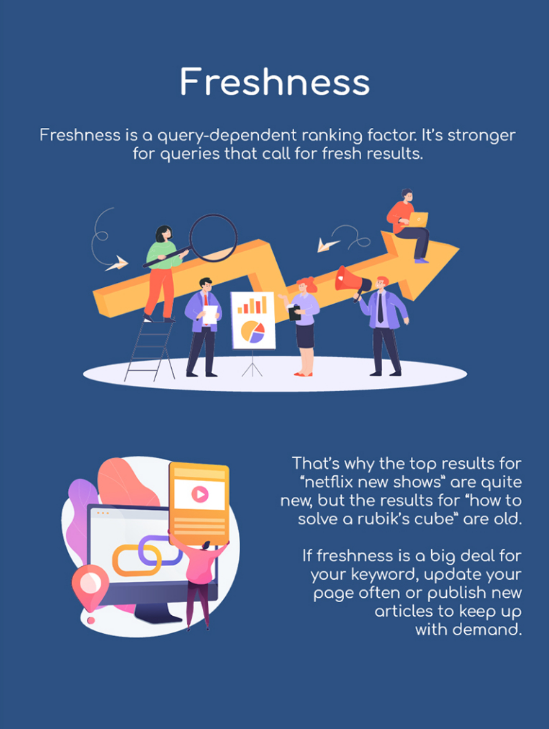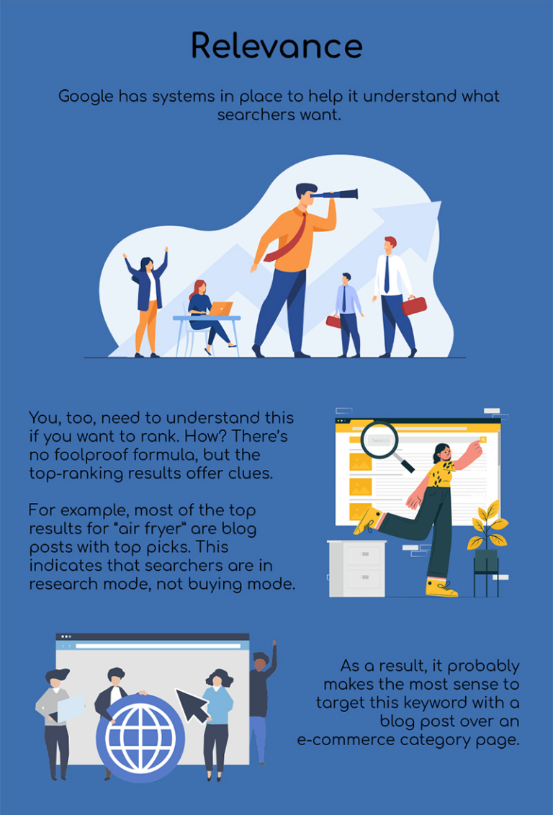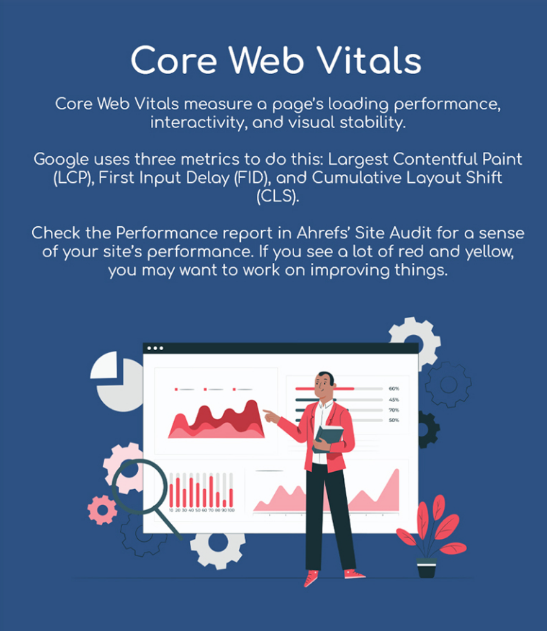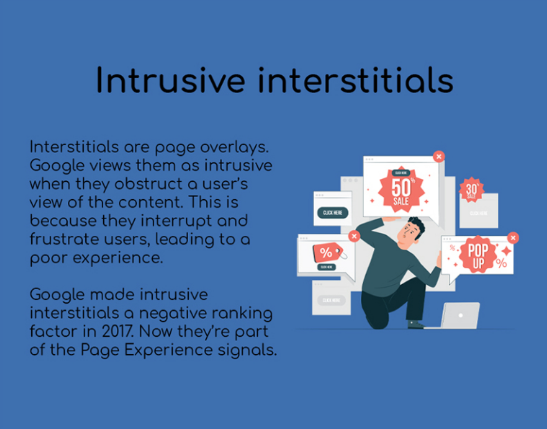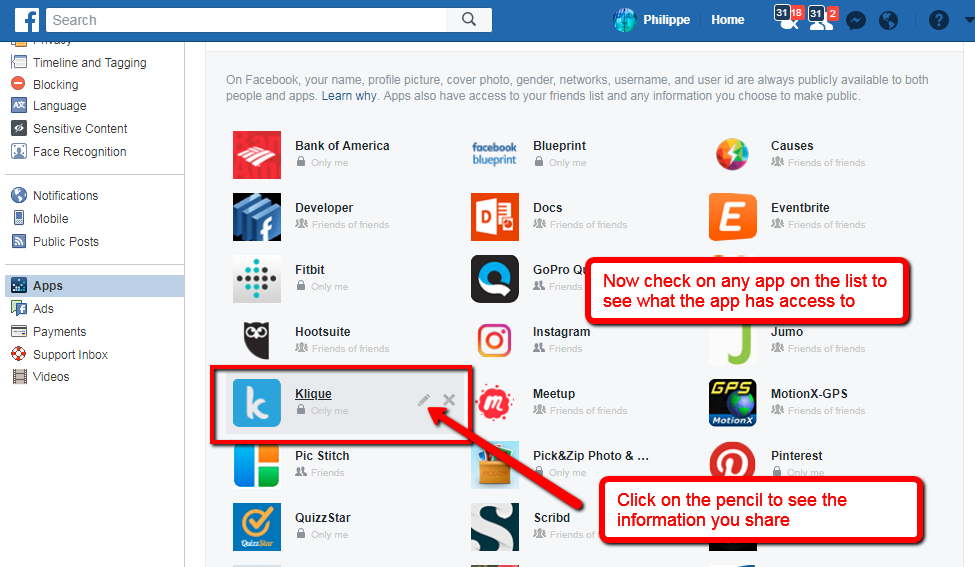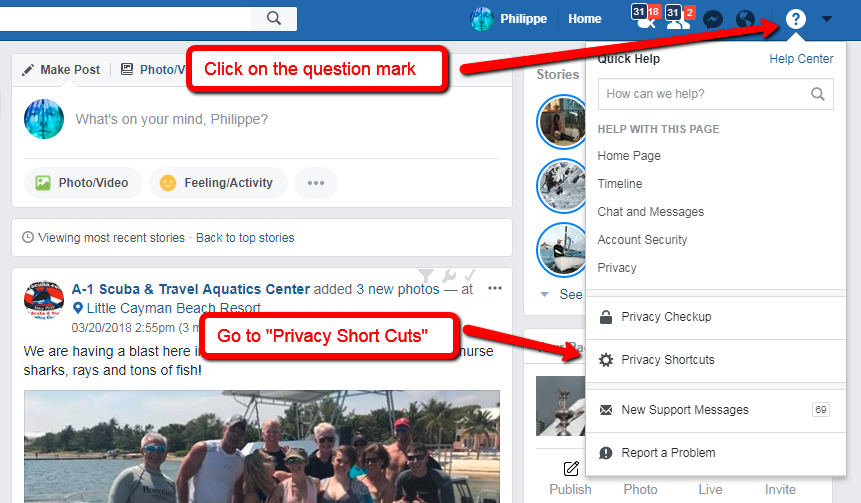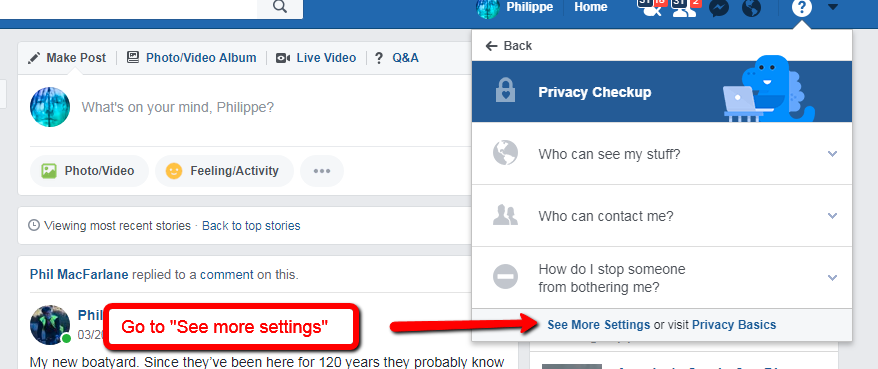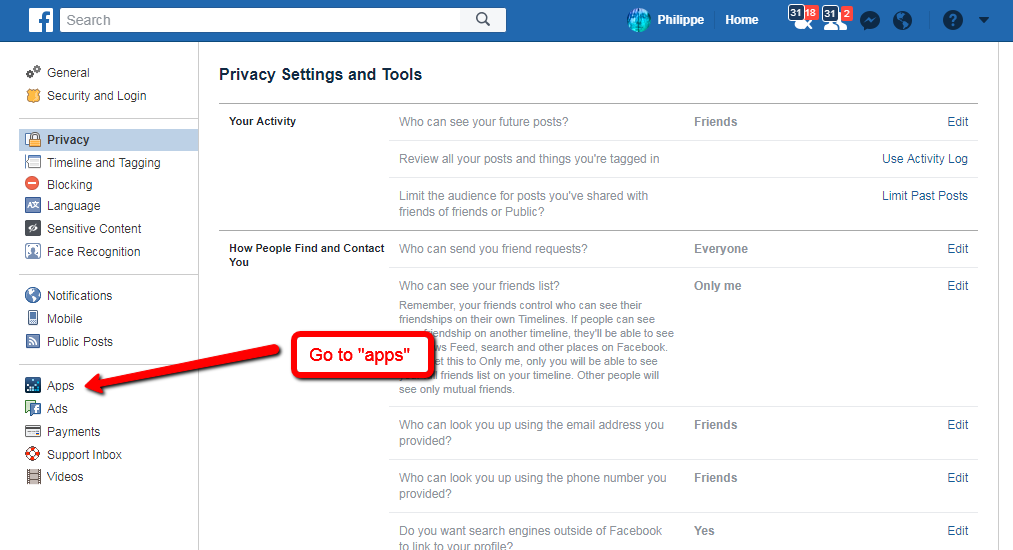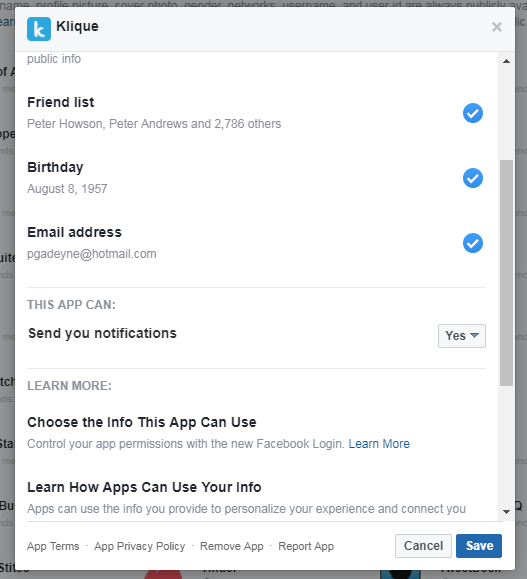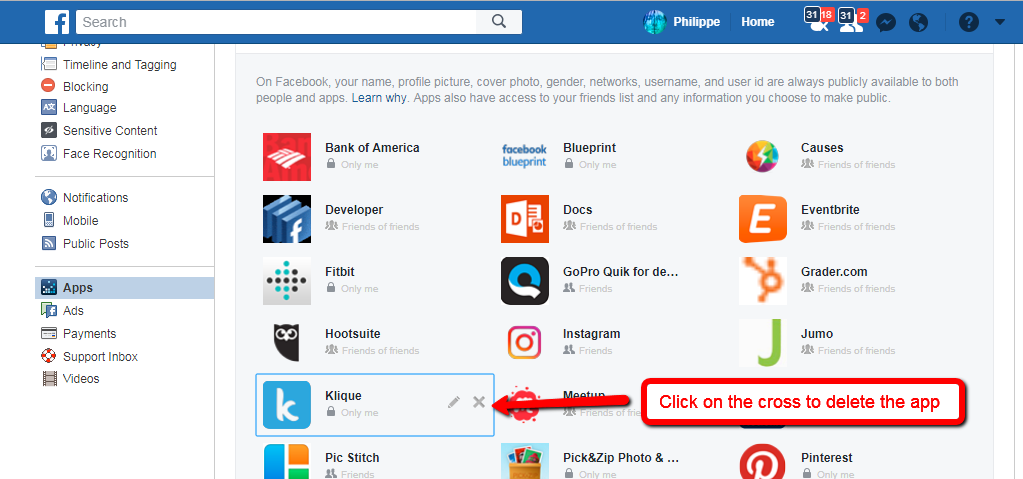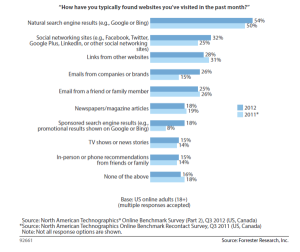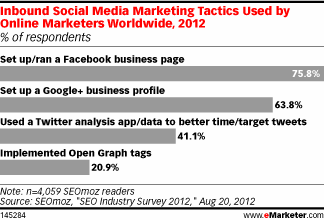Facebook Apps Privacy Check
Facebook app privacy check
How do you do a Facebook app privacy check? With all the bad privacy news emerging this past weekend, now is a good time to check your settings, especially which app you, wittingly or not, allow to dig into your personal information and allow to have access to your friends.
Photo courtesy blogtrepreneur
First, to understand what happened, let’s start from the beginning.
in 2015, a company called Cambridge Analytica, working on election campaigns was looking for extensive data to perfect their analytics model targeted at precisely influencing electoral behavior
One problem though, they did not have access to that massive amount of information
Comes in Cambridge professor Aleksandr Kogan. He creates a Facebook app called “thisisyourdigitallife” described as a tool used by psychologists
Facebook users open the app, by the same token allow the app to collect information about them and their friends.
Now, if that was the end of the story, no big deal, Facebook allows researchers to mine the data for research and academic purpose but Aleksander Kogan then crosses the line and sells the data collected from 50 million Facebook users to Cambridge Analytica.
Cambridge Analytica then uses the massive amount of data to micro target voters for the Trump campaign
The moral of the story, be very careful as to what information you allow apps to have access on your Facebook profile. Before you can open any app the creators are supposed to tell you what information the app will access. Don’t just click yes and think if using the app is worth giving away that information
As we saw in this case, not all data collections are innocent and even if they are, there is no guaranty they won’t be used for nefarious purpose later on.
What now you will ask?
I bet you have given many apps access to your data, now is a good time for a privacy check and a clean up
Facebook or LinkedIn? Most Used Social Media Network For Business
Facebook or LinkedIn, which network is the most used social media network for business, the debate has been going on for years and users debating the pros and cons of both platforms usually coming to the conclusion that Facebook is most used for B2C and LinkedIn for B2B but what does the data tell us?
The 2015 Social Media Marketing Industry Report, based on data from a survey of 3,720 marketers; 61% of survey participants focus primarily on attracting consumers (B2C), and the other 39% primarily target businesses (B2B) sheds some light
Most used social media platforms
Of all platforms, it should not be surprising that Facebook is the most used social network for business overall (93% ) vs Twitter (79%) and LinkedIn (71%).
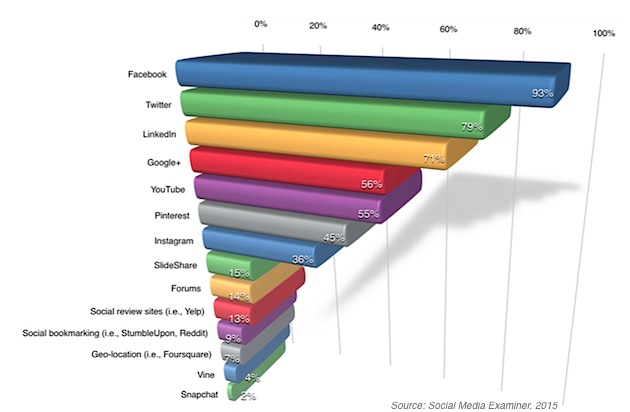 This can be explained by the sheer number of Facebook users vs Twitter and LinkedIn. Facebook has 1.44 billion monthly active users vs LinkedIn 380 million users and Twitter 304 million (2015 with Facebook spending on average 42 minutes per day on the site vs 9.8 minutes on LinkedIn Continue reading “Facebook or LinkedIn? Most Used Social Media Network For Business”
This can be explained by the sheer number of Facebook users vs Twitter and LinkedIn. Facebook has 1.44 billion monthly active users vs LinkedIn 380 million users and Twitter 304 million (2015 with Facebook spending on average 42 minutes per day on the site vs 9.8 minutes on LinkedIn Continue reading “Facebook or LinkedIn? Most Used Social Media Network For Business”
Hashtags: Useful or Nuisance?
 We have all seen them, use them or been annoyed by them when abused, something I call hashtag vomit. Users who don’t understand hashtags tagging their post with so many irrelevant and annoying hashtags you just want to move on without reading the post.
We have all seen them, use them or been annoyed by them when abused, something I call hashtag vomit. Users who don’t understand hashtags tagging their post with so many irrelevant and annoying hashtags you just want to move on without reading the post.
It started on Twitter, Facebook unsuccessfully tried to incorporate them in posts, LinkedIn gave up on them, Instagram and Pinterest users swear by them but few actually understand their use and purpose.
By definition, A hashtag is a type of label used on social network and micro blogging platforms to make it easier for users to find messages with a specific theme or content. In short, hashtags are like keywords allowing readers to find content related to a subject and should be treated as such
Social media “gurus” have been promoting hashtags as essential to social media posts and content success, advising marketers to use hashtags as a critical element of any high-performing social media update without educating their clients and the public about the way to effectively use them
The result has been hashtag vomit, what mainstream search engines would classify as spam. We have seen updates and content with plethora of hashtags, some relevant most irrelevant for the sake of trying to maximize potential exposure.
The question has long been, do hashtags actually work?
The answer is yes and no, depending on your purpose
Twitter recently released a study focused on direct response ads, which are intended to drive a specific result, like an app install or a website visit, suggesting that when these ads included a hashtag or mentioned another account, they didn’t perform well
How Consumers Find Websites
With the on going debate on SEO vs SEM vs Social, a recent study by Forrester Research released in July 2013 sheds some very interesting light on how consumers find websites The study was conducted in 2012 and show the fast rise of social search
- 54% of consumers find websites through natural search results, up from 50% in 2011 but still 7% less than in 2010
- Social networks are the second-most preferred discovery resource, with 32% using them in 2012, up from 25% in 2011 and 18% in 2010.
- 50% of 18-24 year old and 43% of 24 to 32 year old are using social media as their main internet discovery resource
- Links are the third important means of website discovery, with 28% saying they found websites from links on other sites, down from 31% last year.
- Just 18% of those surveyed said that they use ads for website discovery, an improvement from 2011, when paid search was the least popular form of website discovery, with only 8%
- One-third of Americans are using Facebook and Twitter for discovery.
Two-thirds increasing spending on paid social media ads
Two-thirds increasing spending on paid social media ads
Advertisers’ appetites for paid advertising on social media sites shows no sign of abating in 2013. According to a study conducted for digital brand measurement provider Vizu by Digiday, 64% of US advertisers planned to increase their paid social media ad budgets this year, with just 2% saying they intended to spend less money in 2013 than they did in 2012 on paid social ads.

Most of those increasing their spending on ads on social sites planned to do so by 10% or less. But a significant number were making even larger investments: 26% of respondents reported planning to increase their social media ad spending by 11% or more.
Seven in 10 respondents said they would spend between 1% and 10% of their online budget on social ads, suggesting that for most it is a present, but not a dominant part of the marketing mix. For 13% of respondents, however, it plays a larger role: This group spends 21% or more of their online budgets on paid social media advertising.

Overall, eMarketer estimates that US advertisers will spend $4.1 billion on paid social media ads this year, rising to $5 billion in 2014.
Companies’ Approach to Advertising on Social Media
Since the arrival of social media platforms, companies have tried to figure out how to best use them to get their messages to consumers, often with mixed results. Some brands have embraced the notion that social platforms like Twitter allow constant interaction, for better or worse, with their customers.
Others have turned away from some strains of social media, as General Motors did last spring when it stopped advertising on Facebook while raising questions about the return on its investment. The move had a ripple effect in the advertising world, with many brands questioning whether the costs of being on social media were worth it.
A new report issued Tuesday by Nielsen and Vizu, a research company owned by Nielsen, shows that brands think they might be turning a corner, specifically when it comes to paying for their use of social media.The report examined the opinions about social media marketing among more than 500 digital media professionals — including brand marketers, media agencies and advertisers — from September to October 2012.
The study found that that
- 89% of advertisers continued to use free social media products. Nielsen did not release the names of specific social media platforms mentioned by the respondents, but they are likely to include Facebook and Pinterest, as well as Twitter.
- 75% of the companies surveyed said they were also spending more for social media content, which could include paying bloggers to write posts about a product or using third-party technology to push videos on to the Web in the hope that they become viral.
- 70% of the advertisers surveyed said they dedicated up to 10 percent of their budget to paid social media advertising, while 13 percent dedicated more than 21 percent of their budget. Those numbers are expected to increase in 2013.
The results come as companies like Twitter and Facebook are making more diverse advertising options available to brands. Last year, Twitter announced a number of advertising and media initiatives, including a survey product that enables marketers to ask Twitter users a handful of multiple-choice questions. Facebook began testing a new advertising mechanism using a technology called real-time bidding, which allows advertisers to place bids on ad space at specific times.
“Advertisers are starting to look at social media as an integrated part of their advertising strategy,” said Jeff Smith, the senior vice president of product leadership for advertising effectiveness at Nielsen.
Google+ SEO/SEM tool or social media platform?
Since its launch 15 months ago, a big question still remains: Is Google+ a SEO/SEM tool or a social media platform?
Google+ has grown tremendously in the past year (400M users as of September 2012) but the lack of engagement has led to comparing the platform to a ghost town. Is the comparison fair, if you look at the figures, it certainly seem so.
A study from RJ Metrics shows that
- The average post on Google+ has less than one reply, reshare and +1.
- 15% of users will not post publicly again even after posting publicly five times.
- The average time between posts is 12 days for active users.
- The average number of public posts per active users declines steadily month after month.
In contrast, a the Pew Internet & American Life Project found that 52% of Facebook users and 33% of Twitter users engage with the platform daily and a ComScore survey shows that Google+ users spent an average of 3.3 minutes on the site in January vs. 7.5 hours for Facebook.
In response to these dismal figures, Google decide to flex its muscle and leverage its strength in searches by weaving Google+ in their search results, forcing businesses in Google+ by shelving Google places and integrating Google+ and +1 in their search algorithm and the approach seems to show some results
According to an August 2012 survey by SEOMoz,
- 54.9% of online marketers worldwide said Google+ was one of their top five most-used sites for social media marketing, compared to 87.7% who cited Facebook and 82.7% who cited Twitter. Google+ did, however, come in above YouTube, which 48.9% of respondents cited.
- 63.8% of respondents stated that they had set up a Google+ business profile, compared to 75.8% who set up or ran a Facebook business page.

- 89.5% cited changes in Google’s algorithm, like Google Panda, and Google+ as likely to make authorship, site and author ownership of content more important in the coming years
- 56.4% said Google+ was likely to become massively influential in search engine results pages. Adoption and use of mobile and Facebook’s domination were also mentioned by 81.7% and 69.1% of online marketers, respectively.
- 56.1% use Google+ for SEO
- 65.9% use Google+ for branding,despite the lack of user numbers and buzz

Visual outperforms text when it comes to social media engagement
According to a new study from M Booth and Simply Measured, visual content is not only taking over the digital and social media landscape, it’s also outperforming all other mediums when it comes to engagement!
- Videos are shared 12X more than links and text posts combined on Facebook
- Photos are liked 2X more than text posts on Facebook
- 48% of all Tumblr posts are photos.
- On YouTube, 100 million users are liking, sharing or commenting on videos every week.
- Pinterest refers more traffic than Twitter, StumbleUpon, LinkedIn, and Google+ combined
Consumers Trust Online Reviews As Much As Personal Recommendations
The recent (2012) Search Engine Land’s Local Consumer Review Survey shows that since 2010, consumers are more likely to use the Internet to find local businesses, and they are doing it more often. They are also just as likely to turn to the internet, and trust online reviews as they are to ask for personal recommendations about local businesses.
- 85% of consumers surveyed have used the internet to find a local business in the past 12 months. This number is up from 79% in 2010.
- The majority of consumers surveyed use online reviews to make spending decisions. 27% of consumers are regularly reading online reviews, while another 49% are occasional readers.
- 65% of consumers (up from 58% in 2010) are reading between 2-10 reviews when researching local businesses.
- 72% of consumers trust online reviews as they do to personal recommendations.
- 58% of consumers trust a business which has positive online reviews (up from 55% in 2010)
- 52% of consumers are more likely to use a local business if they have positive reviews
- 28% of consumers cite location &/or price as main decision making factor (down from. 38% in 2010)
If you own a business, the statistics are clear, you need a strong online presence, you also need to monitor reviews and be proactive in following up with reviewers in a positive and constructive manner.
Reviews, even negative have always been opportunities to learn, to improve and create fans, do not ignore them, acknowledge reviewers, make things right if you can, pledge to improve, be transparent and truthful

